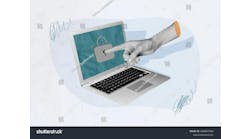As a result of the COVID-19 outbreak in the United States in March 2020, dental licensure testing was postponed for several months. Seeking to address the concerns of limited access to patients and disease transmission, the Southern Regional Testing Agency (SRTA) was quick to the market with a complete non-patient-based test. Our transition was an easy one, as SRTA had been developing and beta-testing a completely manikin-based test for more than two years as an answer to a long-standing call from industry and academia.
SRTA survey results
Less than a year after the release of our complete non-patient-based exam, we commissioned a survey to go out to dental and dental hygiene students and school faculty to assess their thoughts and opinions regarding the manikin test versus the traditional live-patient exam.
Feedback from the survey was robust. We found that among the individuals who completed the survey, 77% said their largest concern was finding a patient (or, in the case of faculty, students finding patients). From the individual responses, students and faculty detailed the many challenges they face using a live patient—concerns that existed before the pandemic and will continue in the future.
Testing on manikins has been part of licensing exams for several years now and has been widely proven to be a justifiable alternative. The survey found that the vast majority of students, when given the option, would choose to take a manikin-based exam since this option eliminates the burden of finding willing patients who meet testing requirements. Faculty share the same opinion, believing that when students are not concerned about their patients being ready and able to participate in the exam, they are in a better mindset to demonstrate their competencies.
The disadvantages of live-patient exams
To detail more of the challenges, in the traditional live-patient exam, each dental student must select two, sometimes up to three separate patients that meet exam guidelines. Hygiene candidates need only one patient, but the chosen patient must have the correct amount of accumulated calculus to be considered for the examination.
From an assessor’s viewpoint, we know that if a candidate is fortunate enough to find several patients willing to participate, they will most likely choose a patient that requires the least minimal procedure necessary to obtain the licensure. This creates an unfair playing field among candidates.
Most candidates aren’t given the luxury of having a plethora of patients willing to participate. To properly prepare for a live-patient test, students must find their patients months in advance of their exam date. This requires extensive planning and preparation.
Even when a patient is secured and present on the day of the exam, the student is oftentimes overly beholden to them to pass. There is the risk for patients being denied by examiners on the day of an exam due to not meeting the criteria requirements, which could result in an automatic failure for the candidate. This can set a candidate back months, causing a financial loss and forcing them to go through the patient selection process again.
Candidates often invest significant financial outlay to find patients willing to postpone their dental needs and wait for the student’s exam. If necessary, candidates will offer compensation in addition to paying patients’ travel and lodging expenses. Unfortunately, we often see patients, knowing candidates depend on them, extort students for more money on exam day when the student has no choice.
There is also a moral dilemma present. Human patients should not be put into a situation where there is a possibility that they will receive substandard treatment to address their dental care.
The priority of patient care and the priority of passing an exam do not always overlap and may even run counter to each another. It is unfortunate that the traditional live-patient exam puts students in a situation where their first concern is the desire to pass the exam, followed by patient safety or dental care.
The benefits of manikin-based testing
Manikins remove the many challenges associated with live-patient testing. Today’s manikins are cutting-edge, mimicking accurate occlusion and tooth anatomy. The usage of manikins Manikins remove the many challenges associated with live-patient testing. Today’s manikins are cutting-edge, mimicking accurate occlusion and tooth anatomy. The usage of manikins also allows for a better, perhaps more reliable, standard of testing. These highly developed, beta-tested technologies have created the perfect patient to accurately assess candidates’ clinical skills. Manikins eliminate outside variables in the test and allow for an equal playing field for students. For dental students, each manikin is equipped with the same lesions. For prospective hygienists, each manikin has the same amount of calculus—enough for a thorough skills assessment.
It was no surprise when we found from the survey that the majority of students and dental faculty would choose a manikin-based exam over a live-patient exam. But what was interesting was that 77% of those surveyed answered that their biggest concern regarding the exam was finding patients, not exam costs or preparation.
The survey brought comments such as:
“Sometimes on live patients, it ends up being the luck of the draw. Sometimes you get stuck doing a challenging restoration instead of an ‘ideal’ one because that’s all you had … Manikin-based makes the exam more uniform.”
We also heard:
“I would prefer a manikin-based exam because it … prevents students from leaving lesions on patients for the sake of boards…”
A final push
The acceptance of a complete manikin-based licensing exam is at the discretion of each state’s dental board. To date, 38 states accept the manikin-based exam. Our hope at SRTA is that the dental industry will make a final push toward manikin testing and accept it nationwide. Our future dental professionals should no longer have to deal with what they believe to be the unsafe, unethical, and overly burdensome process of finding and vetting live patients to obtain their dental or hygiene licensure.
THOMAS G. WALKER, DMD, has been in the dental industry for almost 40 years, obtaining his DMD at the University of Alabama. He taught at the Alabama School of Dentistry from 1982-1992 and started a private practice, which grew into Alabama Dental Associates, a large, multidoctor practice. Today, Walker has a solo practice in Trussville, Alabama, serves as the president of SRTA, and is an active member of several dental organizations.







